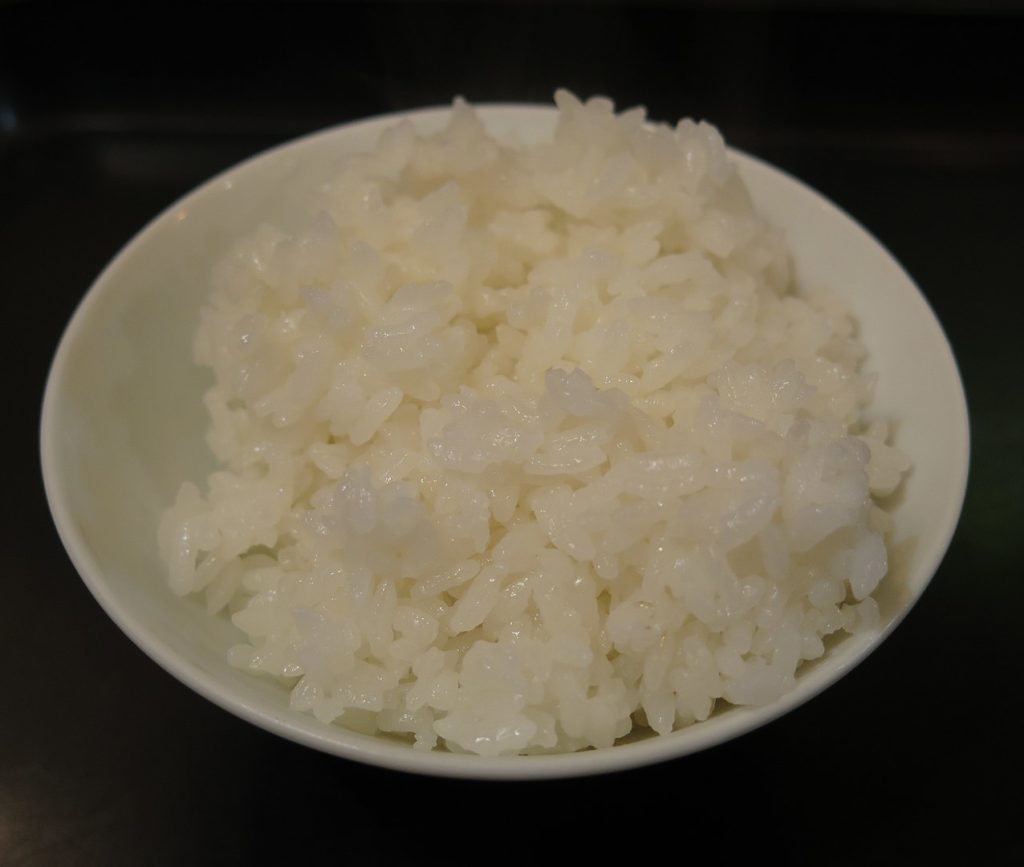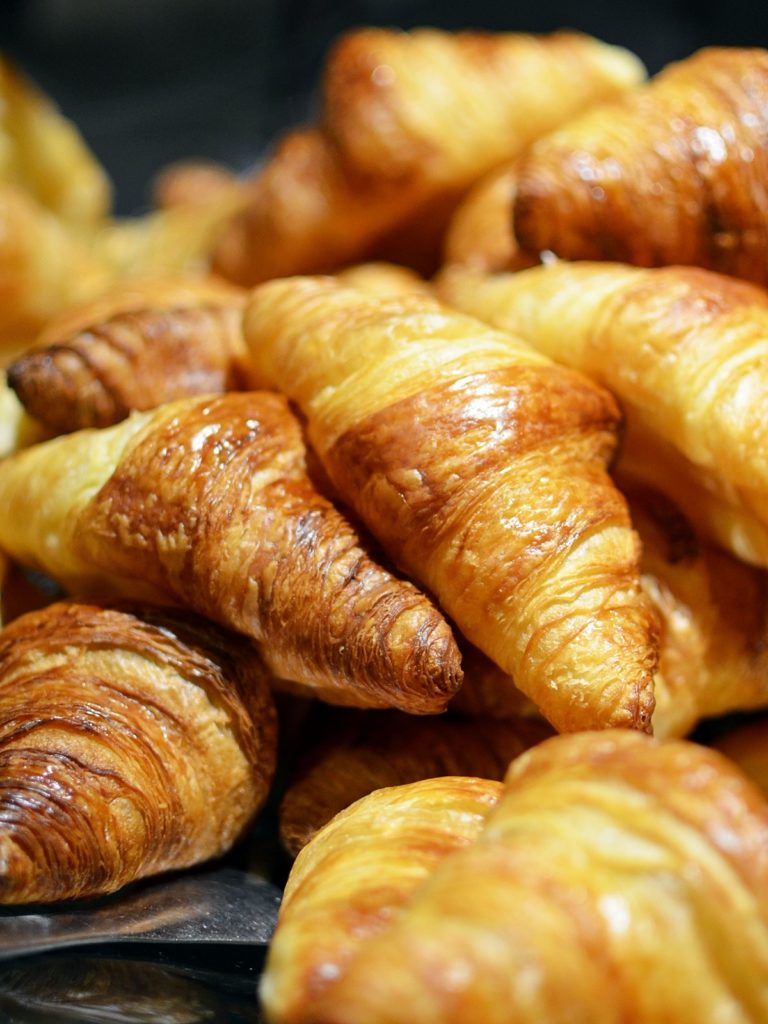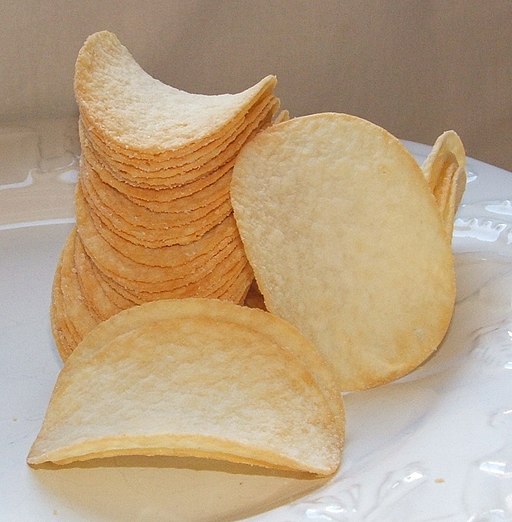At the beginning of this series I stated that any theory of obesity should be able to explain why a Chinese peasant eating a very low fat diet with the bulk of calories furnished by white rice – a refined carbohydrate – is lean, a French person eating a mixed fuel diet of starch, sugar, alcohol and saturated fat is lean (or was in 1970, the French diet has changed in parallel to the American diet since then) and an American eating a mixed fuel diet of starch, sugar and unsaturated fat (soybean oil) is not.

By Douglas Perkins – Own work, CC0, https://commons.wikimedia.org/w/index.php?curid=46049805
I’ve stated that short-term, physiological insulin resistance controls whether of not your fat cells are releasing fat or storing fat. We saw that dietary saturated fat causes short term insulin resistance in humans and that polyunsaturated fat (soybean oil) does not. We saw that mice given an american style diet high in polyunsaturated fats become obese and we saw that mice given a French style high stearic acid (long chain saturated fat found in beef, chocolate and butter) diet become very lean. We’ve seen that saturated fat increases energy availability many hours after meal compared to other fats, that the ratio of saturated to unsaturated fat is the switch that controls leanness and that ROS is the switch that triggers satiation.
Let’s think about what is happening here.
In China
A simple, low fat, high starch diet is the easiest case to understand. You eat a bowl of white rice with steamed vegetables for dinner. Insulin and blood sugar rise. You are insulin sensitive – you’ve been working all day, your ATP levels are low and electrons move easily through the electron transport chain, generating little ROS – so your body makes the switch from fat burning to carbohydrate burning. Muscle and liver cells take in glucose to store as glycogen. Fat cells stop doing lipolysis – the process of releasing fat for other cells to use as fuel – and instead start taking up glucose and doing de novo lipogenesis – turning glucose into fat to store. All of this fat will be saturated or monounsaturated. Humans cannot produce polyunsaturated fat. White rice has very little fat to contribute so your fat stores will be very saturated. You go to bed.
During your overnight fast, insulin levels drop and lipolysis begins again. Free Fatty Acids rise in your blood – saturated fat is available for cells to oxidize to produce ATP. Your fat cells are burning saturated fat now. ROS is being generated in the mitochondria, making some of your fat cells mildly insulin resistant.
It’s important to understand that physiological insulin resistance isn’t a binary decision, there are a lot of shades. ROS unleash a chain of events that change expression levels of genes. This all takes time and the same is true of insulin signalling. The “decision” to respond to insulin or not is made at the individual cell level, so chances are some cells, depending on their specific state will be more insulin resistant than others. Since you’re lean and healthy, your fat stores are relatively low, you’re likely not generating a huge amount of ROS, and when you eat breakfast, fat cells will again take in some sugar and store a little of it as fat. The system is in balance.
Then festival season comes. There is feasting and alcohol and sugary desserts. You pack on a few pounds, mostly saturated fat from de novo lipogenesis.
When festival season ends and you return to your routine, the scenario has changed. Now there’s more saturated fat stored in your fat cells. Lipolysis increases and during your overnight fast your fat cells switch over to fat burning mode. When you eat breakfast they are more insulin resistant due to mitochondria generated ROS. Your fat cells are resistant to take in a lot of glucose because saturated fat is plentiful. Blood sugar rises quickly because fat cells are not taking it in. Since blood sugar is high, glucose flows quickly into the hypothalamus, ATP reserves fill up, the voltage gradient across the mitochondrial membrane is high and ROS are produced, signalling satiation.
Since many of your fat cells don’t switch out of fat-burning made, lipolysis continues and your levels of Free Fatty Acids stay relatively high despite the fact that insulin gave the signal to switch out of fat-burning mode. As your blood sugar levels drop, the Free Fatty Acids are there to replace them as a fuel source. When it’s time for your late morning snack, you’re simply not hungry and so you skip it.
Within a few weeks the extra pounds are gone and your fat cells become more insulin sensitive. This is a system in balance. It works because mitochondrial generation of ROS while oxidizing saturated fat is the fundamental regulator of energy balance at the individual cell level. ROS is the signal. It has been for a billion years.
In France
The French diet in 1970 differed from the Chinese diet in a number of ways, most importantly the addition of alcohol, sugar and fat from dairy and red meat. But in many ways the diet was also very similar. The dietary saturated fats can be stored directly by the fat cells. Sugar and alcohol are both known to stimulate de novo lipogenesis – the production of saturated fat. So even though the French diet is very different from The Chinese diet the same basic principles still hold. The body stores dietary starch, sugar, alcohol and saturated fat as saturated fat in our fat cells.

By Herry Wibisono (herryway) – https://pixabay.com/en/croissant-bread-food-breakfast-101636/ archive copy at the Wayback Machine (archived on 10 July 2014), CC0, https://commons.wikimedia.org/w/index.php?curid=45733817
The same cycle maintains energy balance. After Christmas and New Years, you get back to your routine. Your fat cells are full of saturated fat. You are mildly insulin resistant. Your blood sugar rises quickly and satiation happens easily. Lipolysis kicks back in quickly after breakfast and maybe you skip the late morning snack.
In America
Now let’s think about the case in modern America. The primary difference (I would argue) between the modern American diet and the French diet of 1970 is the addition of polyunsaturated fat, mostly from soybean oil, which is in everything – salads, mayonnaise, fried foods, baked goods, breakfast cereal. Additionally, Americans switched from beef to chicken, which contains plentiful polyunsaturated fats because we feed the chickens soybean oil.
The reason that dietary polyunsaturated fats – AKA PUFA – are different from every other source of energy is they are the only source of energy that are not converted to saturated fat for long term storage. They go straight into storage in your fat cells as is.
So now let’s think of the American that just came through the holidays and packed on a few pounds while dipping shaped carrots and little celery sticks into ranch dressing. The polyunsaturated fats from the dressing went straight into your fat cells. You go back to your routine. When you wake from your overnight fast, sure enough your fat cells have switched into fat burning mode. Since they’re burning unsaturated fat, little ROS is generated and your fat cells remain marvelously insulin sensitive. You eat breakfast. Insulin and blood glucose rise. Fat cells respond by taking in glucose and fat from breakfast. The blood sugar rise is slow because your fat cells are insulin sensitive. Satiation is reached at the normal time.

Glane23 [CC BY-SA 3.0 (https://creativecommons.org/licenses/by-sa/3.0)]
The fat cells respond to insulin by reducing lipolysis to essentially zero. Two hours later, all of the blood glucose has been swept up into fat cells, muscle cells, liver cells. Blood glucose drops to below fasting levels. There are no Free Fatty Acids available because lipolysis has been halted. Hunger returns. You are overweight, you are hungry. Despite the fact that your fat cells are full, your muscle and brain cells are literally starving. There is nothing for them to eat.
ROS is the signal. For a billion years, there has been a bottleneck in the mitochondrial electron transport chain that acts like a switch, allowing the organism to know when it is burning fat. Unsaturated fat doesn’t flip the switch.

You are killing it with these posts. Peter’s Proton series was a game changer for me and now you are breaking it down. I wish I could find a chart ranking fast food restaurants by average pufa content. If only McDonald’s had continued to use tallow to cook their fries. Lol! Thanks a lot for putting all of this together!
Justin
Thanks, Justin!
Yes, I believe McDonald’s decision to pull tallow out of their fryers will go down in infamy.
Brad
Thanks for the time and effort you’ve put in to this site. I’ll be reading it all again.